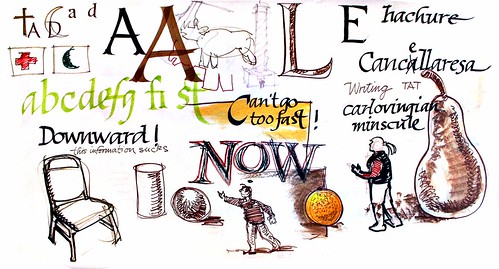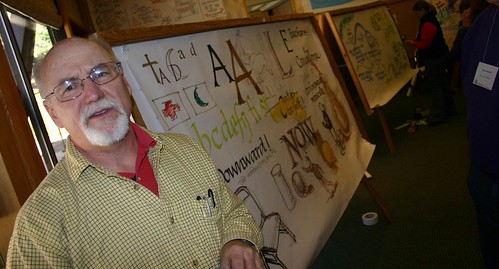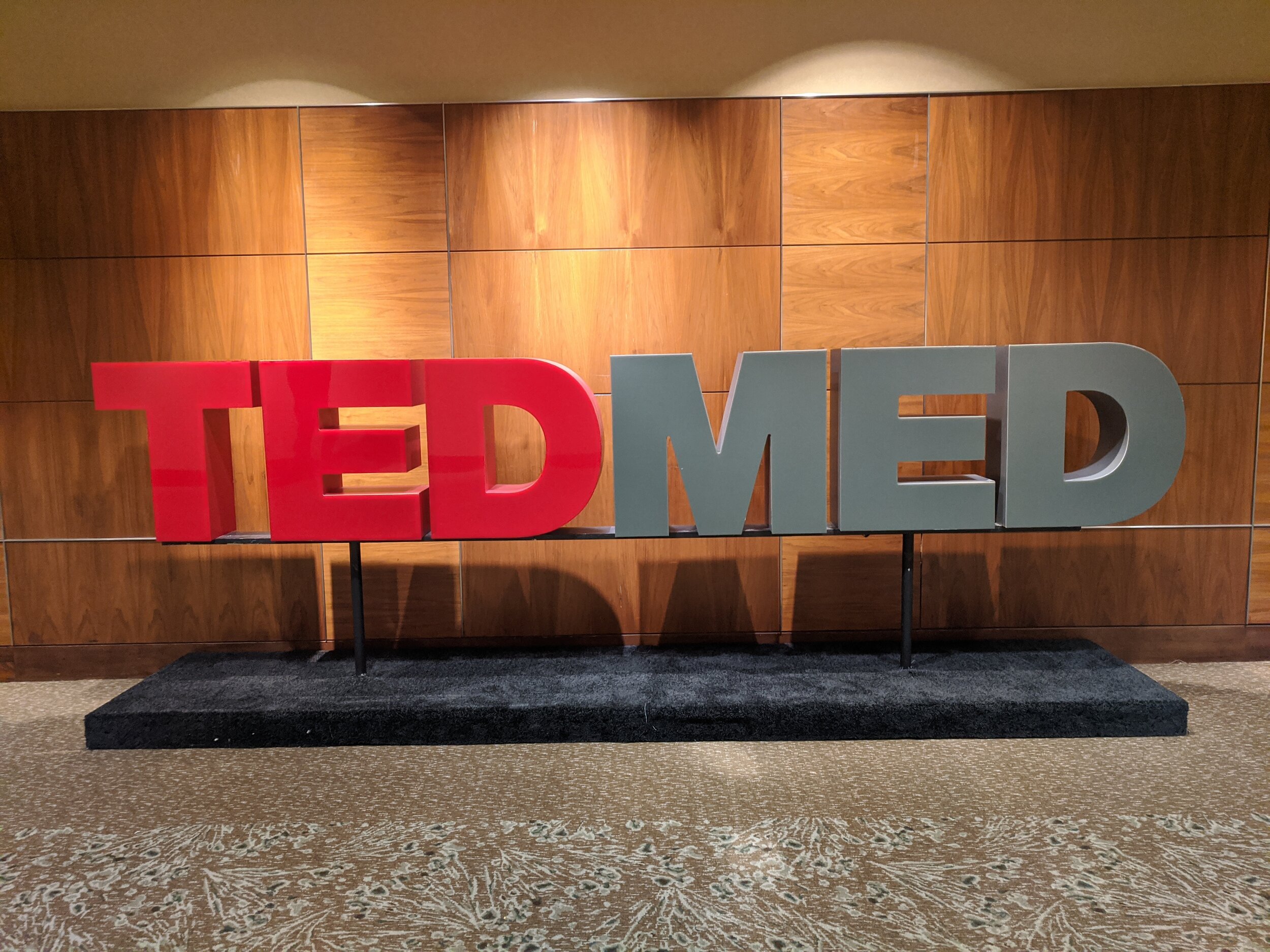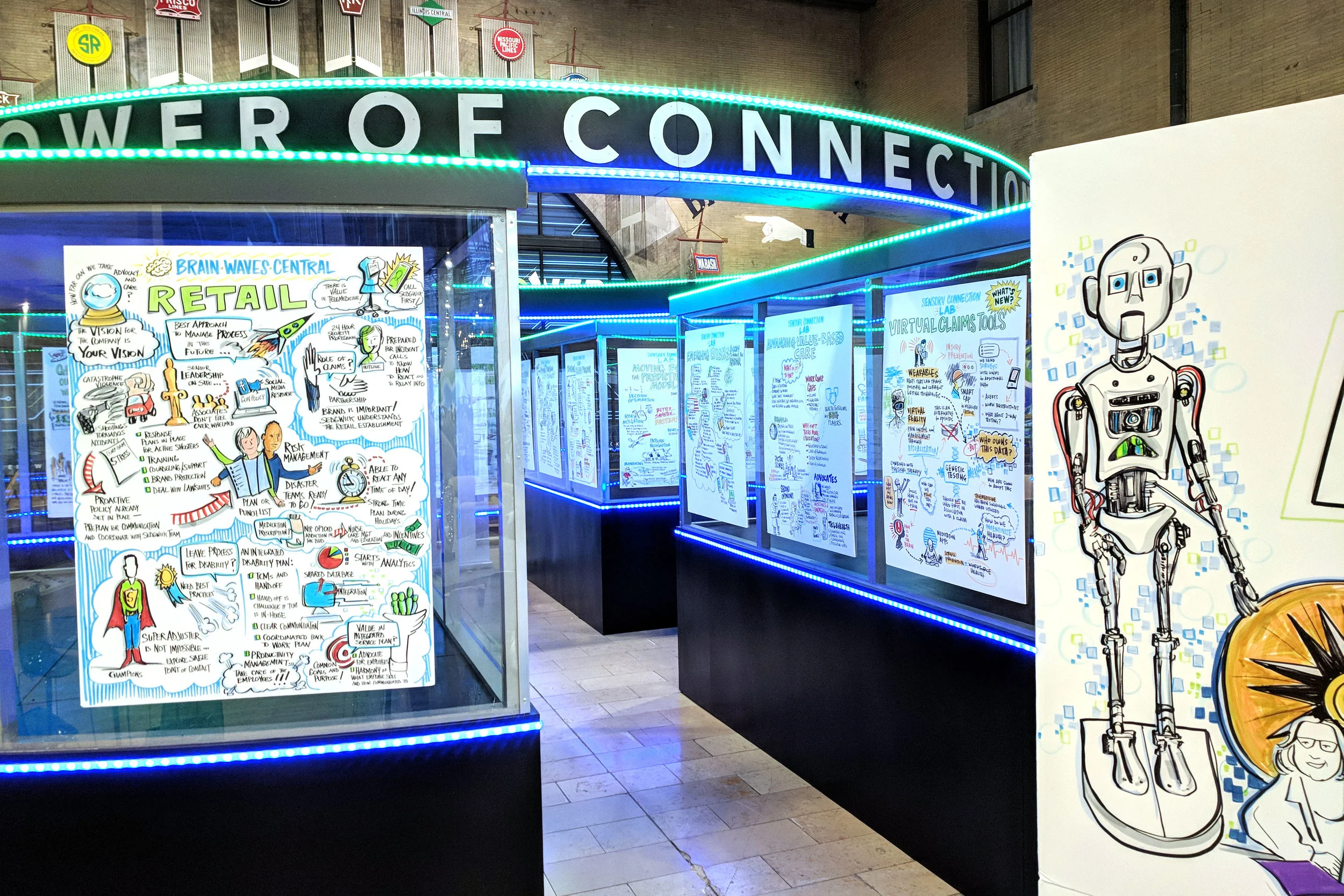Imagine the experience of the first generation of pilots.
Wedged into those wacky machines belching greasy smoke, with wings of shellacked canvas, bound together by tension wires, straining poles and hope.
As the elevation increased, the individual structures of barns and airplane hangers receded to reveal vast networks: canal systems, topographic complexity, patchworks of natural and artificial boundaries etched into the skin of the earth.
This, my friends, is the 20,000-foot view sited so often in boardrooms and consulting documents; it is the elevation that explodes the perception of “seperateness” and “silos” as mere texture in the rich tapestry of the earth.
Now, imagine being that early pilot coming back to earth. Imagine their frustration when explaining to the farmers and truck drivers and milkmaids the wonder of seeing all that connected complexity. (How easy and elegant it looked!) Then, those pilots had to walk home. Uphill. In the snow.

[photo: Peter Durand]
This is the experience that may be shared by many of us in our own work.
As individuals and small groups––with help from research, collaboration, imagination––we’ve caught a glimpse of that futurescape, the possible horizons, the beauty and complexity that knits all the manic activities together.
So, what is essential in sharing the vision with others, those farmers, trucker drivers, milk maids, executives, board members?
It is a map to go along with the story.
This requires a tiny bit of work and ingenuity. Mostly, it requires moving away from the linear and becoming comfortable with the non-linear, away from the bullet-point list and towards systems thinking.
As a graphically minded visual learner myself, I have to admit full-disclosure: I can’t work any other way now!
I mean, after those early flights, when the topography of the countryside was revealed to the pilots’ eyes, well, after that, there’s no going back.
Now, when faced with your next Big Hairy Audacious Goal (BHAG), remember to zoom out. Draw big. Map out relationships and connections. Examine the whole topography of the situation.
Take that flight. And, this time, bring along some passengers.
 References
References You Are Here
by Katharine Harmon — Amazon
Else/Where: Mapping—New Cartographies of Networks and Territories
by Janet Abrams and Peter Hall — Amazon
The Mind Map Book
by Tony Buzan and Barry Buzan — Amazon
Visual Explanations: Images and Quantities, Evidence and Narrative
by Edward R. Tufte — Amazon Peter Durand is a graphic facilitator who runs his business Alphachimp Studio, Inc. from Pittsburgh. You can learn more about Peter and his work, and find more of his writing on his Website.
[Photo: Team members map out issues. Credit: Peter Durand]
 mica grain & Marie-Helene Carleton
mica grain & Marie-Helene Carleton

























 One opera house, 3 days, 500 participants, hundreds of "dangerous" ideas... this was
One opera house, 3 days, 500 participants, hundreds of "dangerous" ideas... this was 






